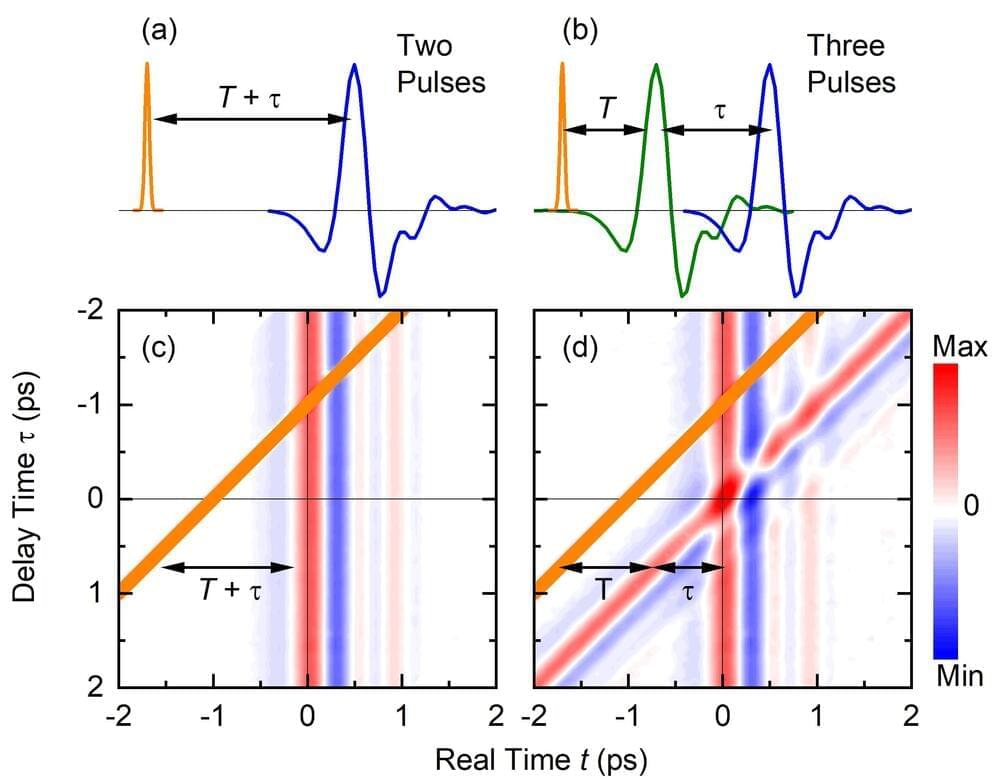Researchers at the Max-Born-Institute have now mapped the linear and nonlinear optical polaron response using ultrafast two-dimensional spectroscopy in the THz frequency range. As they discuss in the current issue of Physical Review Letters, multi-photon ionization of isopropanol molecules by a femtosecond pulse in the near-infrared generates free electrons and the resulting changes of the dielectric properties of the liquid are probed and/or manipulated in the THz frequency range.
An electron and the surrounding cloud of solvent dipoles couple through electric forces and can undergo joint collective motions. Such many-body excitations in the terahertz (THz) frequency range are called polarons and have remained nearly unexplored so far. New results from ultrafast THz spectroscopy demonstrate the generation and manipulation of coherent polaron oscillations in a time range of 100 ps and beyond, thus enabling the control of dynamic electric properties of polar liquids.
Ionization of a polar liquid by intense light or particle beams generates free electrons, which relax on a picosecond timescale (1 ps = 10-12 s) into a localized ground state. The relaxation process includes the reorientation of the surrounding dipolar solvent molecules and the dissipation of excess energy.
